
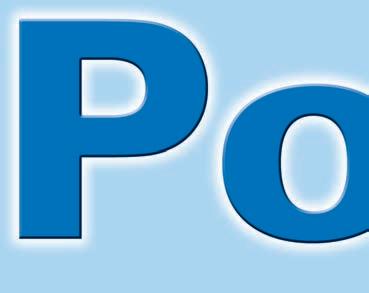
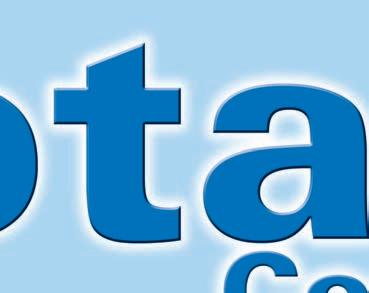
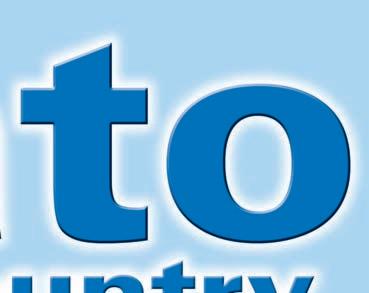







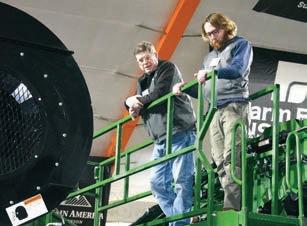



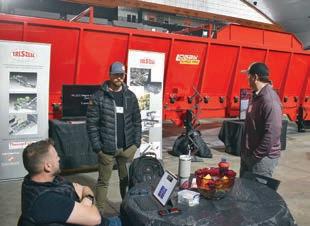

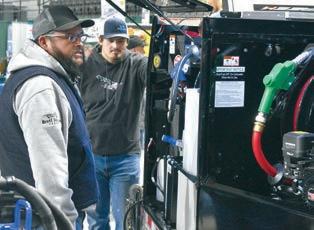


Potato Country Turns 40 2024 Planting Considerations Growth Essentials Buyers' Guide Western Shows Roundup PotatoCountry.com • March/April 2024 Western focus with national impact for 40 years Ag World ..............................3 Bayer ..................................28 Colorado Seed ....................23 Corteva...............................27 Greentronics.......................14 Idaho Crop..........................22 Inter Agra .............................9 IPC........................................5 Montana Seed ....................15 Nutri-Cal .............................21 Redox .................................19 Skone Irrigation ..................26 SpudEquip.com ..................17 Stukenholtz ........................25 The Potato Podcast Sponsored by Vive ..............13 Teleos ...................................2 Titan Steel ..........................11 Verbruggen.........................20 ADVERTISER INDEX
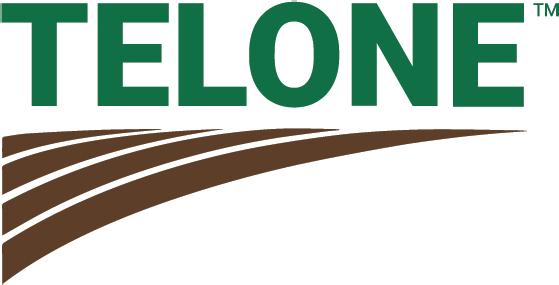




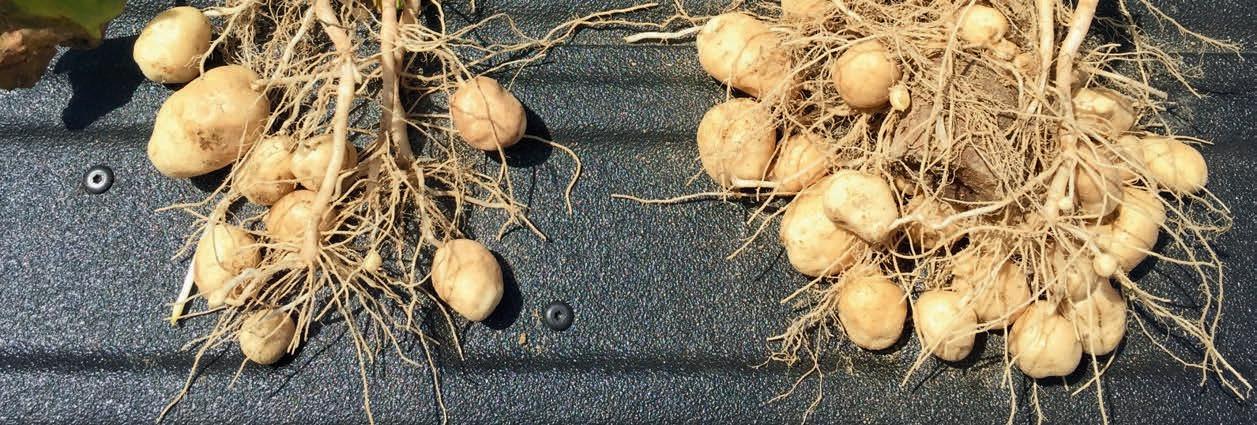

TELONE™ II is the world's best defense against destructive plant parasitic nematodes, including root-knot, root-lesion, and stubby-root. Applying TELONE™ before planting leads to healthier roots, higher yields, and improved quality. A custom blend of TELONE™ (to combat nematodes) and chloropicrin (to target soil-borne diseases like fusarium wilt and scab) is an effective one-two punch for all of your potato needs. www.TeleosAg.com Contact your TELONE™ Specialist to learn how TELONE™ can set you up for a successful growing season. LET US HANDLE THE NEMATODES SO YOU CAN HANDLE EVERYTHING ELSE. TELONE™ is a Trademark of the Dow Chemical Company (“Dow”) or an affiliated company of Dow, used under license. TELONE™ is a federally Restricted Use Pesticide. Always read and follow label directions. REMEMBER, THERE'S NO COMING BACK FROM A POOR START! POTATOES GROWN IN NON-FUMIGATED SOIL POTATOES GROWN IN SOIL TREATED WITH TELONE™ & CHLOROPICRIN



















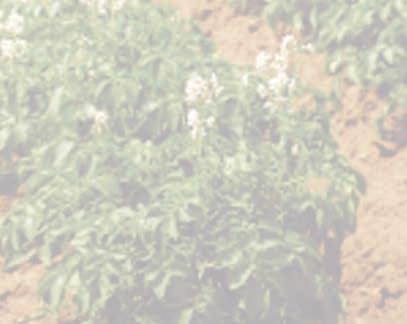

CELEBRATING 11 YEARS OF GIVING TO RONALD MCDONALD HOUSE CHARITIES HOSTED BY: Join us for the 11th Annual Ag World Golf Classic June 4 - Kennewick, WA | June 6 - Moses Lake, WA AgWorldGolf.com
Founder Warren Henninger through giving to the House
Honoring the Legacy of





6
9
10
14
18
24

PO Box 333, Roberts, Idaho 83444
Telephone: (208) 520-6461
Circulation: (503) 724-3581
PotatoCountry.com
EDITOR
Denise Keller editor@ColumbiaMediaGroup.com
OPERATIONS MANAGER, ADVERTISING
Brian Feist brian@ColumbiaMediaGroup.com
PUBLISHER, ADVERTISING
Dave Alexander dave@ColumbiaMediaGroup.com
INSECT IDENTIFICATION
Andy Jensen www.nwpotatoresearch.com
DISEASE IDENTIFICATION
Jeff Miller jeff@millerresearch.com
MARKET REPORT
Ben Eborn napmn@napmn.com
POTATO GROWERS OF WASHINGTON
Dale Lathim dale@pgw.net
EDITORIAL INFORMATION
Potato Country is interested in newsworthy material related to potato production and marketing. Contributions from all segments of the industry are welcome. Submit news releases, new product submissions, stories and photos via email to: editor@ColumbiaMediaGroup.com.
ADVERTISING SALES
For information about advertising rates, mechanics, deadlines, etc., call (208) 520-6461 or email dave@PotatoCountry.com.
SUBSCRIPTIONS
U.S. $24 per year / Canada $40 per year / Foreign $80 per year Subscriptions can be entered online at: potatocountry.com/subscribe or call (503) 724-3581. Email address changes/corrections to: brian@ColumbiaMediaGroup.com or send to
Potato Country, PO Box 333, Roberts, ID 83444.
Potato Country magazine (ISSN 0886-4780), is published eight times per year and mailed under a standard rate mailing permit at Idaho Falls, Idaho and at additional mailing offices. It is produced by: Columbia Media Group, PO Box 333, Roberts, ID 83444
Copyright 2024. All rights reserved. No part of this publication may be reproduced or transmitted in any form or by any means, electronic or mechanical, for any purpose without the express written permission of Columbia Media Group.





4 Potato Country • March/April 2024
Gary Roth Executive Director Oregon Potato Commission (503) 239-4763 Jamey Higham President/CEO Idaho Potato Commission (208) 334-2350 Nina Zidack Director Montana Seed Potato Certification (406) 994-3150 Jim Ehrlich President/CEO Colorado Potato Commission (719) 852-3322 EDITORIAL BOARD Country Western focus. National impact. Vol. 40 No. 3 MARCH/APRIL 2024 13 Insect Quiz 21 New Products 21 Calendar 22 In the News 26 PGW Column 26 Advertiser Index
Holt Arena
Pocatello, Idaho, is home to the Eastern Idaho Ag Expo. Although the facility has seen upgrades over the years, some of the same vendors have been going to the show there for decades. Look back at more memories from past potato shows on pages 14-17. Conference attendees participate in the Flavor Chip Challenge and check out the trade shows at the Washington-Oregon Potato Conference and Idaho Potato Conference and Eastern Idaho Ag Expo. Find highlights from the shows on pages 6-8 and 18-20. TABLE OF CONTENTS Chris Voigt Executive Director Washington State Potato Commission (509) 765-8845 ON THE COVERDEPARTMENTS
2008:
in
Industry Issues Washington-Oregon Potato Conference
New NPC Report Demonstrates Widespread Economic Benefits to Potato Trade
Growth Essentials Buyers' Guide
Potato Country Turns 40 A Look Back at Past Potato Shows and Events
In Shape Idaho Potato Conference and Eastern Idaho Ag Expo
2024 Potato Planting Considerations Market Report




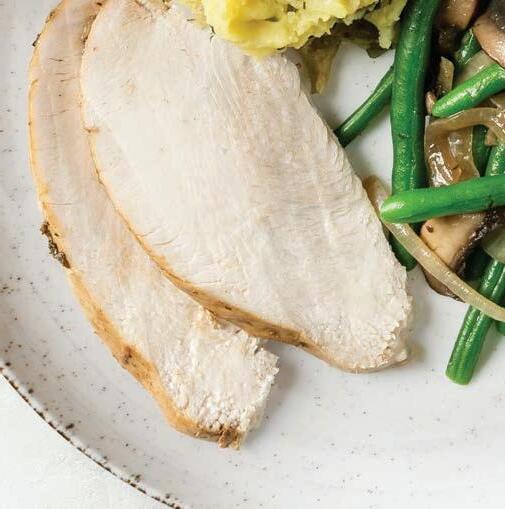
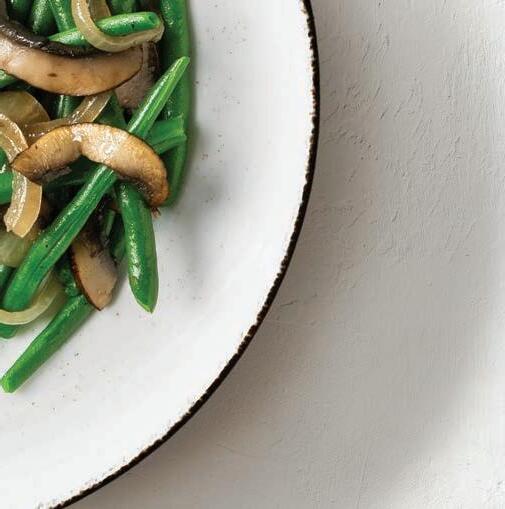

LIVING WITH DIABETES doesn’t have to mean living without potatoes
In November, during American Diabetes Month, we continued educating those living with diabetes and prediabetes about how Idaho® Potatoes can be a safe and healthy source of carbohydrates. We are proud to participate in the Better Choices for Life program offered by the American Diabetes Association®. It has allowed us to amplify our campaign by utilizing PR, digital and social activities. We successfully reached 45 million people –and that’s just the beginning.






IdahoPotato.com
¼Carbs ½ NonS t a r ch y V e g e selbat ¼ Protei n
Industry Issues
By Denise Keller, Editor


As
usual, the agenda for the Washington-Oregon Potato Conference was packed from open to close with opportunities to visit vendors in the trade show, check out new product innovations and potato varieties, and hear about fresh perspectives and farming practices. While many presentations took a deep dive into the nitty-gritty of the latest research projects, others provided a big-picture view of some of the issues impacting the industry.
Climate Change
Always a hot topic, a talk on climate change and water supplies helped kick off the two-day general session. Nicholas Bond from the Office of the Washington State Climatologist focused his presentation on how projections of future temperatures and precipitation, and snowpack, compare with past conditions.
The historical record shows warming of the regional climate, including the potato growing regions of Washington, with particularly robust upward trends in summer night-time temperatures (almost 3 degrees Fahrenheit over the past century), as well as winter temperatures for both day and night (slightly more than 2 degrees per century), Bond reported. Annual precipitation totals have included considerable temporal variability, with negligible trends in an overall sense. On the other hand, the last two to three decades have featured relatively dry summers for the most part and increasing values of potential evapotranspiration, suggesting greater water demands. Regional snowpacks – in particular, values of the snow water equivalent at the end of winter – have tended to decline in the lower and middle elevations of the mountain watersheds, but by no means everywhere, according to Bond. Notably, the upper watersheds of the Columbia and Skagit Rivers, where winter precipitation continues to be in the form
6 Potato Country • March/April 2024
Daniel Birrenkott (left) and Nick Chiodo work the Lockwood Manufacturing booth in Kennewick, Wash.
WASHINGTON-OREGON POTATO CONFERENCE
Agri-Stor showcases its updated Agri-Star storage panel.
of snow, remain healthy, with continuing fluctuations from year to year.
Climate model projections of the climate of Washington indicate warming over the course of the remainder of the 21st century, with warming rates dependent on global greenhouse gas emissions. The models’ projections of precipitation are more mixed, with a consensus that future decades will include drier summers and probably somewhat wetter winters. Snowpacks will generally continue to decline, especially at elevations below roughly 4,000 feet. This trend will be punctuated by considerable temporal variability and liable to become increasingly problematic in some watersheds from a water supply perspective in the latter half of this century, Bond said. Stream flows are expected to be greater in winter and early spring, and reduced during the late spring and summer. Hydrographic models suggest that this change in the timing of natural flows for the main stem of the Columbia River can be accommodated by the present set of reservoirs and management practices to yield future summer flows, and presumably irrigation supplies, comparable to current values.
Sustainability
A look at the long-term future of the industry continued with a presentation from Natalie Nesburg with the Potato Sustainability Alliance (PSA). Nesburg filled in attendees about the organization’s updated sustainability program launched last year. The program addresses key focus areas, including greenhouse gas emissions, water stewardship, food waste, soil health, farmer prosperity, biodiversity and integrated pest management. The program also includes a new selfassessment tool designed by industry stakeholders to define, measure and advance sustainability. The Sustainability Outcomes in Agriculture Standard, enabled through the Cropwise Sustainability app, serves as the self-assessment tool that has been customized by PSA to meet sustainability reporting requirements and provide growers with personalized community insights.
A total of 420 growers, representing
589,120 potato acres, across the U.S. and Canada participated in the PSA program by completing the selfassessment. A performance metric is used to communicate the sustainable attributes linked to various on-farm management practices. Throughout the self-assessment process, growers receive real-time performance insights, while also joining a community of peers to receive a benchmark report. The report provides further insights into each farm’s overall performance in comparison to other participating growers in the region, highlighting areas of success and suggested opportunities for improvement.
According to Nesburg, participating growers across North America have showcased a proactive engagement in sustainability through the establishment of beneficial management practices informed by data collected and experts, and new practices and technologies are being implemented consistent with improving the industry standard. In the coming months, PSA will dive deeper into these self-assessment findings to highlight on-farm achievements and guide organizational initiatives within program focus areas.
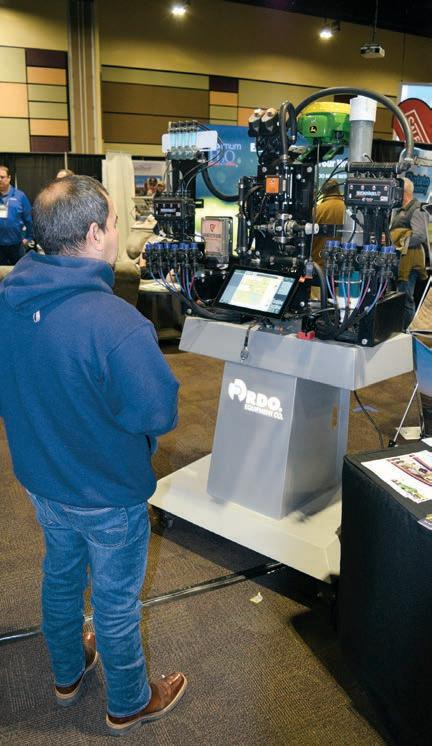

PotatoCountry.com 7
Trade show visitors keep booths busy in Washington.
A conference attendee checks out RDO Equipment’s display.


Industry Honors Andy Jensen
The Washington State Potato Foundation selected Andy Jensen to receive the 2024 Industry Leadership Award and presented the award during the Washington-Oregon Potato Conference.
Jensen was nominated by his peers in appreciation and recognition of his retirement from the potato industry after more than 30 years in the research enterprise, especially in entomology and pest management.
Jensen grew up in Portland, Oregon, and was known throughout his neighborhood as “that weird bug-loving kid.” He went on to study entomology at Oregon State University, earning his Ph.D. in 1996. His specialized work began with aphids and the diseases they vector, especially Potato virus Y (PVY) and Potato leafroll virus. Through the years, his hobby of collecting and identifying aphids has led to the discovery of 30 new aphid species.
In 1999, the Washington State Potato Commission hired Jensen as the commission’s first director of research. He filled the role until the potato commissions of Washington, Oregon and Idaho established the Northwest Potato Research Consortium in 2012 and hired Jensen as the consortium’s manager.
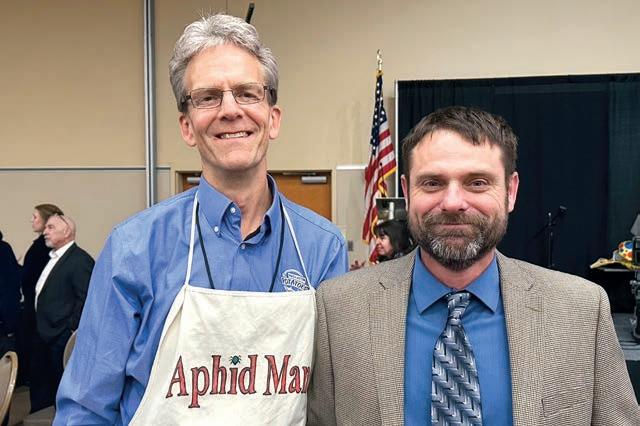
During his career, he was also involved in the Potato Variety Management Institute, Potato Association of America and Washington State Commission on Pesticide Registration.
Friends and colleagues voiced their appreciation for Jensen’s dedication to the industry and his ability to simplify complex scientific concepts into practical information and advice.
“The foundation has chosen to honor a man whose academic rigor and 30-year career has bridged the gap between the laboratory and the potato field,” said Kellee Balcom, executive director of the Washington State Potato Foundation. “It is rare to find a scientist who can successfully translate the complicated principles of academia to real-life solutions for potato growers.”
Jensen plans to retire June 30.
WASHINGTON-OREGON POTATO CONFERENCE
Jenny Durrin Gentry displays PVMI varieties at the trade show. A trade show visitor takes a swing in a golf game at the Harvest Master booth.
8 Potato Country • March/April 2024
Andy Jensen (left) was honored with the Washington State Potato Foundation’s Industry Leadership Award, presented by the foundation’s board president Tim Waters (right). Photo courtesy Kellee Balcom, Washington State Potato Foundation

New NPC Report Demonstrates Widespread Economic Benefits to Potato Trade
By Bob Mattive, President, National Potato Council
As U.S. potato growers and industry allies flew into Washington, D.C. in late February to attend NPC’s annual Washington Summit, they had a new tool in their toolbox as they advocated for a longstanding policy priority: expanded foreign market access for U.S. potatoes.
Last year, NPC released a study that calculated for the first time the total economic contribution of the entire U.S. potato value chain. That analysis, conducted by economists at Michigan State University, concluded that the U.S. potato industry generated an estimated $100.9 billion of domestic economic activity in 2021 alone, while supporting more than 714,000 American jobs in every corner of the country.
In 2023, growers were able to take those facts to their lawmakers in support of pro-potato and pro-farming policies. The economic data clearly justified the value for lawmakers and the administration in enhancing the competitiveness of such an incredibly important crop for America’s rural communities and the country as a whole.
During the 2024 Washington Summit, this data was sharpened and focused on the benefits of exports to the U.S. potato industry and the value of our industry’s international trade agenda.
We all know that today approximately 20 percent of all potatoes grown in the U.S. are destined to be exported, in either fresh or processed form, making trade a significant component of the $100.9 billion U.S. potato industry.
The new MSU analysis assessed the current economic contribution of exports of potatoes and potato products on the U.S. economy. Then it took the data a step further and analyzed the role that expanded trade opportunities would have on U.S. economic activity and jobs.
The results of the study are powerful. They show that, from July 2022 through June 2023, the U.S. exported $2.2 billion in potatoes and potato products, generating around $4.78 billion in economic activity and supporting approximately 34,000 U.S. jobs throughout the value chain. Farm laborers, processor workers, truck drivers and longshoremen (and all the support positions along the way) all benefited from federal policies that supported the trade of U.S. potatoes.
The study also looked at how the U.S. economy and its workers could benefit from even more market access in the future.
Based upon a conservative and achievable expansion in foreign market access and maturity in places like Canada, Japan, Mexico, South Korea, and other East Asian and Middle Eastern markets, we found that the U.S. Gross Domestic Product would
increase by another $1 billion and more than 5,600 domestic jobs would be supported.
Potatoes are not only America’s favorite vegetable, they hold the key to unlock further job growth and economic development in the future. Whenever growers and our allied industry partners talk to members of Congress or any elected leader, they need to remind them that potatoes will help drive even more U.S. economic prosperity with increased market access and expanded trade opportunities.
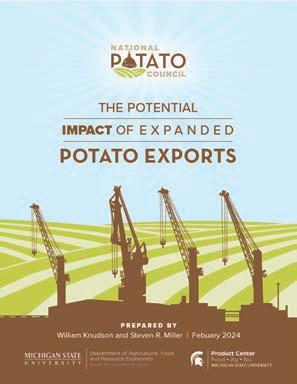
For the full details, please visit nationalpotatocouncil.org/ spudnation.
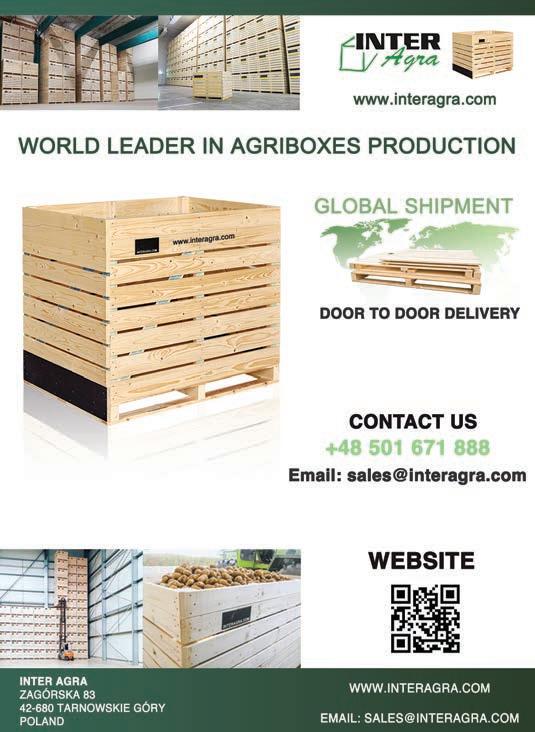
PotatoCountry.com 9
NATIONAL POTATO COUNCIL
GROWTH ESSENTIALS
BUYERS' GUIDE

Crop Vitality
cropvitality.com
CaTs
CaTs is a 100 percent water-soluble calcium with a 0-0-10S-6Ca analysis. CaTs applied through the irrigation system can supply much needed calcium and sulfur at critical growth and uptake times. Recent trials with CaTs in the Pacific Northwest have shown both increased yields and improved storability.

CultivAce
cultivacegrowth.com/free-phos-24-liquid-phosphate-fertilizer
Free pHOS 24

CultivAce is a West Coast manufacturer and distributor of a comprehensive line of foliar and starter fertilizers. CultivAce offers innovative solutions that drive agricultural crop yields and cultivate profitable outcomes. With a relentless focus on delivering high quality foliar and starter fertilizers, the company is committed to empowering growers with the tools needed to achieve remarkable results. CultivAce is built on two fundamental principles: products must be the highest quality, and they must make the grower money. If a product doesn’t meet these standards, CultivAce doesn’t manufacture it.
CultivAce standout liquid phosphate Free Phos 8-24-0 is field proven in potatoes with supportive trials from various states, exemplifying the company’s dedication to effective agricultural solutions.
JH Biotech
jhbiotech.com/chelation-and-mineral-nutrition
Biomin
Biomin is a line of fully chelated plant nutrients resulting from the chelation of mineral nutrients with amino acids. These chelates protect the nutrient from combining with other elements or losing nutrient value for absorption. JH Biotech’s Biomin chelated line is OMRI, CDFA and WSDA organic certified and is compatible with humic and fulvic acid products. Without using harsh chemicals, it provides plants with stable nutrients, balancing mineral deficiencies more quickly than conventional inorganic nutrients. It can be used for soil and foliar applications without compromising environmental quality and safety. Biomin may be applied to all crops and turf. It reduces the effects of saline soils, water deficiency and weather conditions while encouraging increased yield, homogeneous ripening, more flavored and high quality fruit, and greater nutrient absorption.
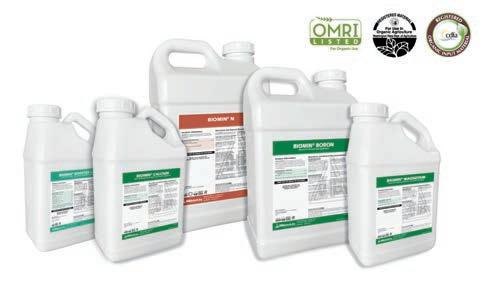
10 Potato Country • March/April 2024
Nutri-Cal
nutri-cal.com
Nutri-K
Nutri-K liquid potassium is a special formulation of highly soluble potassium, carboxylic acids and carbohydrates. The carboxylic acids and carbohydrates, which are the same complexing agents identified in the formulation of NutriCal, are derived from plant extracts in a patented process. There are no nitrates, chlorides or sulfates. It has a low salt index and is therefore non-corrosive.

The product works when the T.O.G. complexes the elemental potassium ion, which subsequently allows the ion to be absorbed directly and immediately through the leaf and fruit cell walls.
Nutri-K T.O.G / liquid potassium complex provides a unique delivery system, which protects the potassium from forming an insoluble compound, enabling more efficient movement of potassium ion to the fruit/vegetable where it is needed most.
Omex
omexusa.com
Cell Power Zynergy
Plants, especially potatoes, have their own natural defenses against both pests and diseases, mainly involving the use of key nutritional elements such as manganese, sulfur, zinc and copper. An example of this holistic approach is the Omex product Cell Power Zynergy, a specially formulated combination of highly available copper, zinc and sulfur, plus Omex’s EBA technology designed to form a key part of an integrated crop management program to boost crop health and maximize yield potential. Cell Power Zynergy helps correct nutrient deficiency in order to improve plant health along with tolerance to abiotic stress. Used in combination with crop protection sprays, Zynergy maximizes plant defenses and acts to synergistically improve pesticide sprays.




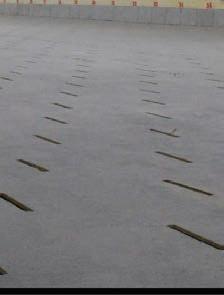
PotatoCountry.com 11
GROWTH ESSENTIALS BUYERS' GUIDE

Redox Bio-Nutrients
redoxgrows.com
Mainstay Calcium 2.0
Mainstay Calcium 2.0 from Redox Bio-Nutrients is a key asset to achieve premium potato quality come harvest time. It is specifically formulated to provide concentrated plant-available calcium and short-chain soluble carbon compounds for plant nutrition and soil structure. Results include crop firmness, cell wall strength, plant nutrition, soil structure and root growth.
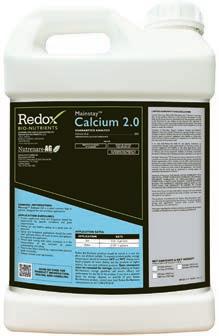
Rovensa Next
rovensanext.com/en/
Nanocal
Nanocal is a sub-micronized, soil-applied, readily available liquid calcium specifically formulated to be applied at hook to strengthen cell walls, improve tuber quality, increase specific gravity, mitigate storage issues and promote overall crop health. Nanocal should be applied just prior to or at the early stages of tuber initiation to ensure maximum calcium uptake during cellular division. It’s meant as a supplemental source of calcium available to plants during this critical stage of development; it’s not meant to remedy calcium deficiency in soils.

TPS Lab
tpslab.com
CSL+
CSL+ is an innovative organic blend of L-amino acids from a combination of soy protein hydrolysate and corn steep liquor. This cutting-edge formulation provides many benefits from fulvic and other beneficial organic acids, proteins, enzymes, vitamins, hormones and sugars.
CSL+ is a highly bioavailable nutrient source with outstanding uptake efficiency, effectively increasing the plant-available N-P-K chemical analysis over other fertilizers that are excellent for any conventional, sustainable or organic program.
L-amino acids are nature’s building blocks of proteins and play a vital role in photosynthesis. They also contribute to many plant functions: cell wall strength, fruit quality, pollination, pollen fertility, hormone synthesis, formation of vegetative tissue, chlorophyll synthesis, stomatal regulation, chelation and more.

12 Potato Country • March/April 2024
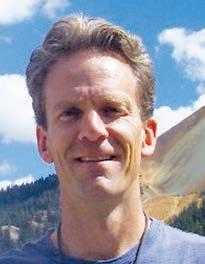

Potato fields host many strange and wonderful insects and other arthropods. Recognizing some of the less common types might help reduce the worry about potential harm or cost they represent. Below are photos of three types of arthropods that can be locally or seasonally common in and around potato fields in the Northwest. What is each animal and how do they make their living?
Answers Page 21




BASponsored by:

PotatoCountry.com 13 INSECT
QUIZ
provided
BIOLOGY
This material is
courtesy of Andy Jensen, Ph.D., Manager of the Northwest Potato Research Consortium. For more information, visit www.nwpotatoresearch.com.
C
Listen on: ThePotatoPodcast.com



Potato Country Turns 40
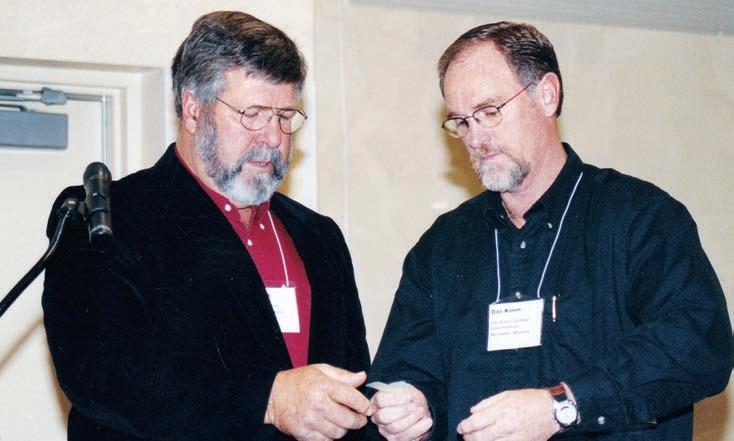

2024 marks the 40th anniversary of Potato Country magazine, and we are diving into the photo archives each issue to celebrate. We’re hoping to jog some fond memories for you, or maybe you’ll spot a family member or friend pictured. If you do, be sure to let them know you saw their picture in Potato Country. You just might make their day.
And if you have an old photo that you think would be perfect for upcoming 40th anniversary issues, email it to editor@ columbiamediagroup.com.

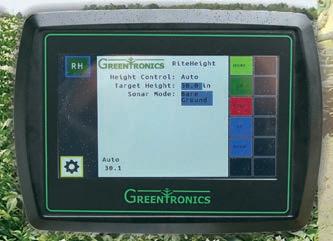

14 Potato Country • March/April 2024
2004: From left, Sid Kamps and Dan Kimm attend the Montana Seed Seminar.
2004: Andy Jensen has written Potato Country’s Insect Quiz for years and will be missed by our staff upon his retirement this June.
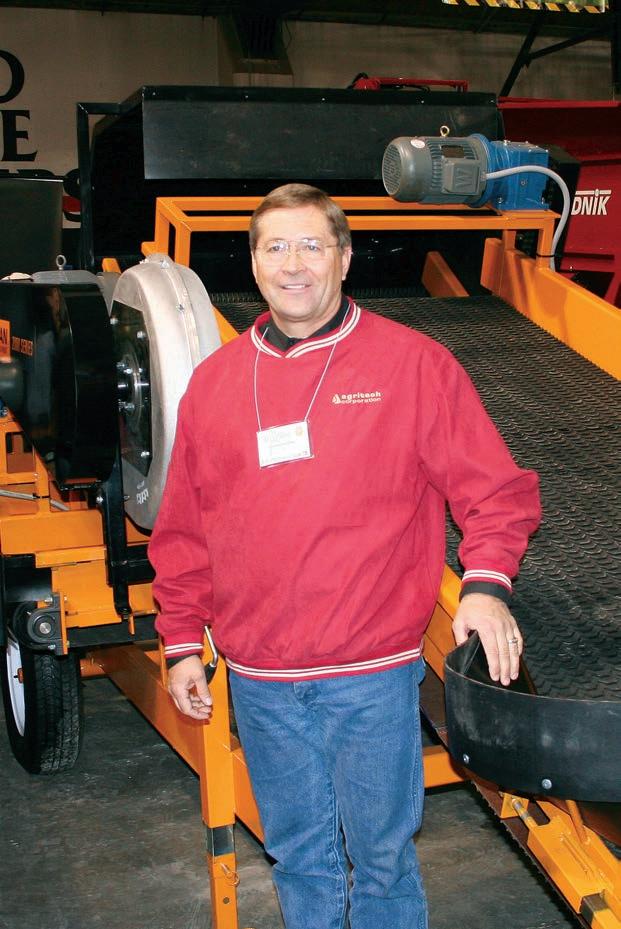


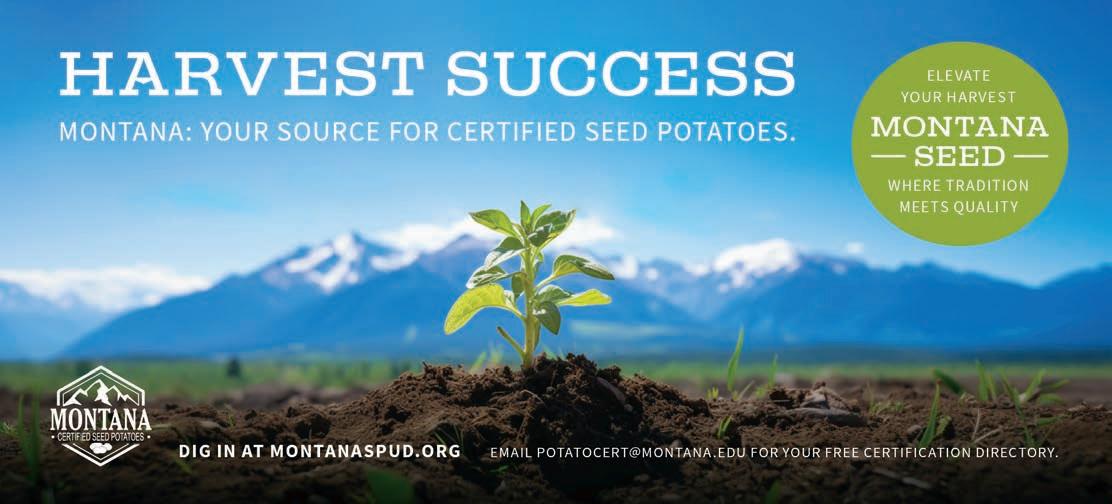
PotatoCountry.com 15
2008: Bruce Nyborg displays Logan Equipment at the Eastern Idaho Ag Expo.
1998: Dave Blatchford from Baker City, Ore. attends the Oregon Potato Conference in Ontario, Ore.
1999: Ed Macy picks a door prize winner.







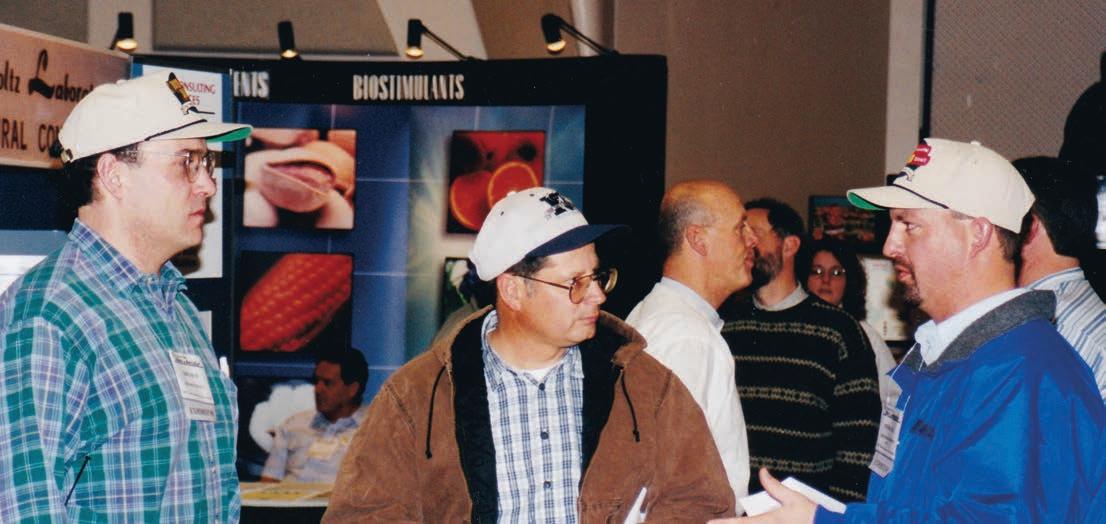

 2001: From left, Paul Jamson, Lute Prinsen, Rick LeFair and Jose Gonzales check out a trade show booth.
1997: The Washington State Potato Commission takes part in the Washington Potato Conference.
1999: From left, Chris Berg, Pete Cassinelli and Michael Bell converse at the Idaho Potato Conference.
2001: From left, Paul Jamson, Lute Prinsen, Rick LeFair and Jose Gonzales check out a trade show booth.
1997: The Washington State Potato Commission takes part in the Washington Potato Conference.
1999: From left, Chris Berg, Pete Cassinelli and Michael Bell converse at the Idaho Potato Conference.
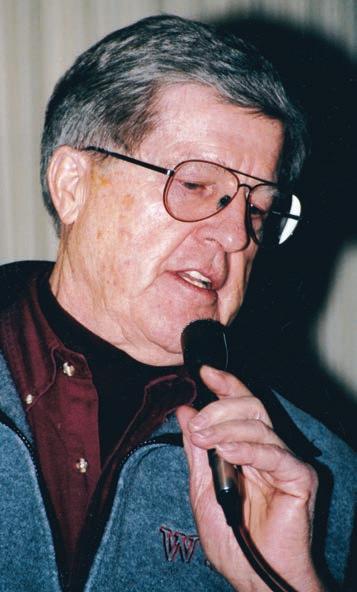

PILERS
1998 Double L 831 36” x 49’ Belted chain, remote 3ph
1996 Double L 831 36” x 49’ Belt Chain, remote 3ph
1996 Double L 831 36” x 49’ All belt 3ph
1990 Double L 813 30” x 49’ Belt chain 3ph
1998 Milestone 36”x 48’ 3ph
1991 Spudnik 550 36” x 49’all Belt, remote 3ph Reconditioned
SCOOPERS
1990 Spudnik 100 24” 3ph
1982 Spudnik 100 24” 3ph
TRUCKS
2004 Kenworth W900 M11 Cum 350hp 15 speed Tran. Spudnik 26’ bed
1998 Volvo 13spd cummins 400hp
Tri-Drive, Spudnik 22’ Bed
BULK BEDS/BOXES/ SELF UNLOADING
1993 Double L model 801 20’
1982 Double L model 801 20’
1985 Logan 20B Electric 20’
1992 Spudnik 2100 20’
1990 Spudnik 2100 20’
1990 Spudnik 2100 26’
1986 Spudik 2000 20’
CROSSOVERS/WINDROWERS
2014 Double L 6560 36” 6 row
2009 Double L 951 34” bed 4row
1996 Double L 851 36” bed 4 row
2019 Spudnik 6140 32” rows R&L discharge
2007 Spudnik 6140 36” bed 4 row RH
2004 Spudnik 6140 34” bed 4 row LH
HARVESTERS
2020 Double L 973 36” bed 4 row
2018 Double L 7340 36” bed 4 row
2012 Lockwood 474H 4 row
2004 Spudnik 6400 4 row 34”
2001 Spudnik 5625 36” bed 2 row
COLLECTORS & STINGERS/PUPS
2019 Spudnik 1600 Collector 60” belt, 1-42”, 2-36” stinger/pups
2015 Logan Collect Pro Cart 48” belted chain, dirt belts, 2 -30” Logan belt stinger/pups
2007 Double L 833 30” Belt Chain only
2015 Double L 832 36” BC with fingers
2013 Logan STGT 36” Telescopic 230 V 3ph
CONVEYORS TELESCOPIC
1994 Double L 820 30” x 60’ 3ph
2014 Logan 48” x 85’ Tel. conv. 230 volt 3ph
Milestone 30”/36” x 60’ Tel. Conv. 480 volt 3ph
1996 STI 30” x 70’ 3ph Tel. Conv.
CONVEYORS STRAIGHT
Spudnik Model 1200 30” x 15’ 230 Volt 3ph
Spudnik Model 1205 30” x 40’ 3ph x 5
SIZER ONLY
2017 Milestone 48” 480 Volt 3ph
2004 Spudnik 925 84” 230 Volt 3ph
1998 Spudnik 925 72” 230 volt 3ph
1998 Spudnik 925 72” 1ph
1996 Spudnik 925 72” 3phase
NOT COMPLETE LIST. CALL OR CHECK:
DIRT ELIMINATOR W/SIZER
1997 Double L 807 Dirt Elim. 62” BC 3ph Stingers 72” Sizer
2010 Milestone 60” sizing table only w/acorns quick adjust arms
1994 Milestone 72” Dirt Elim. Sizer, 2 – 24” x 12’ stingers
2011 Spudnik 96” 990 BC Elev. Reverse roll table, sizing table, split picking, cross out conv.
2004 Spudnik 995 DES 72” Q A dirt & Size roll tables, split picking 230 volt 3ph.
2002 Spudnik 72” DE belt elev
DIRT ELIMINATOR ONLY
2000 Double L Model 878 80” BC hopper, fingers, BC picking table 3ph.
2017 Milestone 96” 480 3phase
2006 Spudnik 925 72” 3phase
2006 Spudnik 995 72”Finger rollers, ellis table, Belt Chain table 230 Volt 3phase
1990 Spudnik 950 72” 230 volt 3phase
ROCK/CLOD/AIR ELIMINATORS
2013 Harriston 3240 Clod Hopper 3ph
2011 Harriston 3240 Clod Hopper 3ph
2003 Harriston 240 Clod Hopper Ellis table 3ph
2001 Harriston 200 Clod Hopper Ellis table 1ph
EVEN FLOWS/ SURGE HOPPER
New Logan 2024 Surge Hopper
New Logan 2024 Even Flow
PLANTER FILLER DIRT TARE
1985 Spudnik model 1100 Tube loader 20’
PLANTERS
2002 Kverneland 3300 Cup 6 row 36” Pull type, Hyd. Drive
2007 Harriston 6 row Cup semi mount 36”
2006 Harriston 6 row Cup semi Mount 36’
2011 Lockwood 6 row Air Cup 34” semi mount hyd drive
2013 Spudnik 8069 bed planter 9 units in 6 row pull Type
2008 Spudnik 8080 Pull type cup, 8 row, 36”
2007 Spudnik 8060 hyd. Drive, 36”
SEED CUTTERS
2002 Better Built 72”
TREATERS
2018 Better Built 12” Liquid/Dry treater
1994 Better Built CDT10- 8” Cannon Duster
WATER DAMMERS/ POWER HILLER
Milestone 6 row Water Saver 36” spacing
MISC.
Lockwood Even flow 24” belt 3ph 600cwt
Shop built Tire roller w/ water tank, 6 row and 4 row
Ace Roll over Hyd. Reset Plow 5 bottom
2020 Logan Barrel Washer for little potatoes
Belly Dump Unloader Attachment for Scooper
Warehouse Evenflows: 1200 cwt, 900 cwt, 400 cwt
Greentronics Scale
Kerian 60” sizer
PotatoCountry.com 17 BRUCE: (208)390-5120 | BRUCEN@TRISTEELMFG.COM • EVAN: (208)757-8481 | EVANN@TRISTEELMFG.COM • MAX: (701)740-7574 | MAXW@TRISTEELMFG.COM SPUDEQUIP.COM
PREMIUM USED EQUIPMENT
& RELIABLE PURCHASE
QUICK
2001: Bob Thornton retired from Washington State University Extension in 2004.
1999: Jim Baggenstos (left) and Ed Stastny take the podium at the Oregon Potato Conference.
In Shape U of I Study Confirms Link Between Growing Conditions, Potato Length and Width
By John O’Connell, University of Idaho
Arecent University of Idaho study concluded that for most, but not all, potato cultivars, the length and width of the finished tubers is influenced by growing conditions.
The study findings support the possibility of using potato variety trial data to create a predictive model for selecting cultivars capable of growing to optimal dimensions when raised anywhere in the Pacific Northwest. Length-to-width accounts for 13 percent of the overall potato postharvest score in
variety trials done by Washington State University (WSU), and processors value elongated tubers as they can be cut into fries with minimal waste.
Rhett Spear, an assistant professor of plant sciences who conducts potato variety evaluations at the UI Aberdeen Research and Extension Center, presented the research during the 56th annual Idaho Potato Conference and Eastern Idaho Ag Expo in Pocatello, Idaho, in mid-January.
Spear led the project, reviewing 15
years of trial data from Aberdeen, Idaho; Othello, Washington; and Hermiston, Oregon.
While some cultivars evaluated were extremely sensitive to their environment, a handful, such as Palisade Russet, produced tubers of a consistent size and shape regardless of growing location and variability in conditions. The length and width of most cultivars was moderately sensitive to growing conditions.
“Collectively, our results suggest an opportunity for genetic selection of
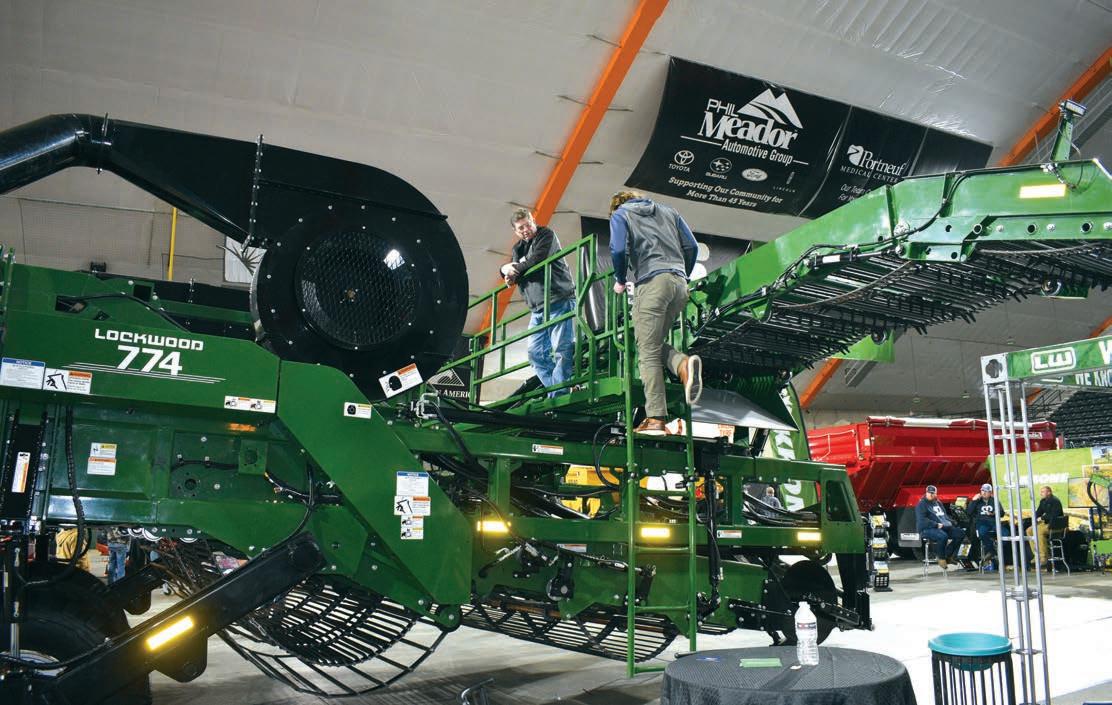
18 Potato Country • March/April 2024
IDAHO POTATO CONFERENCE AND EASTERN IDAHO AG EXPO
The trade show in Pocatello, Idaho, gives attendees a chance to see equipment like this Lockwood 774 harvester in person.
elongated potato phenotypes that are stable across locations with minimum variation in length and width,” Spear said.
Spear’s research team also included Julia Piaskowski, director of statistical programs with U of I’s College of Agricultural and Life Sciences; Jacob Blauer, an assistant professor of potato physiology with WSU; Mark Pavek, a professor specializing in potatoes with WSU; and Richard Knowles, a professor emeritus with WSU.
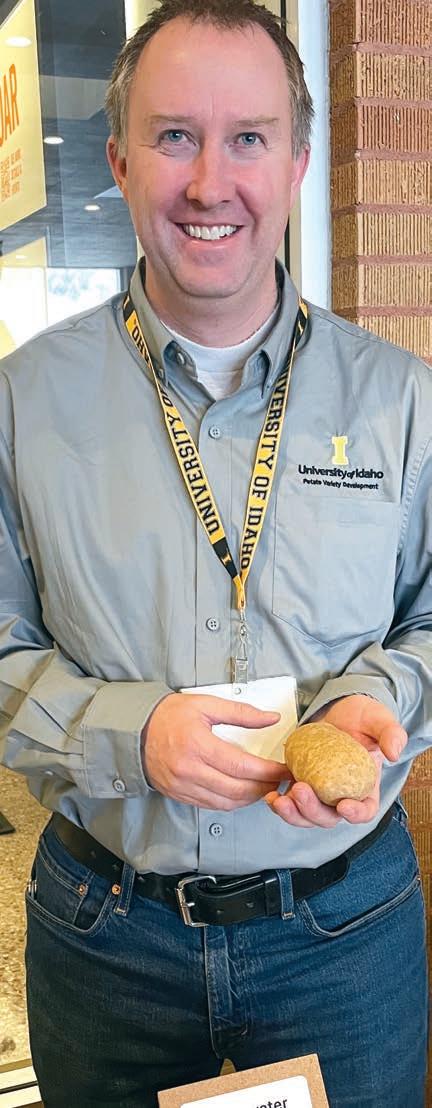






















































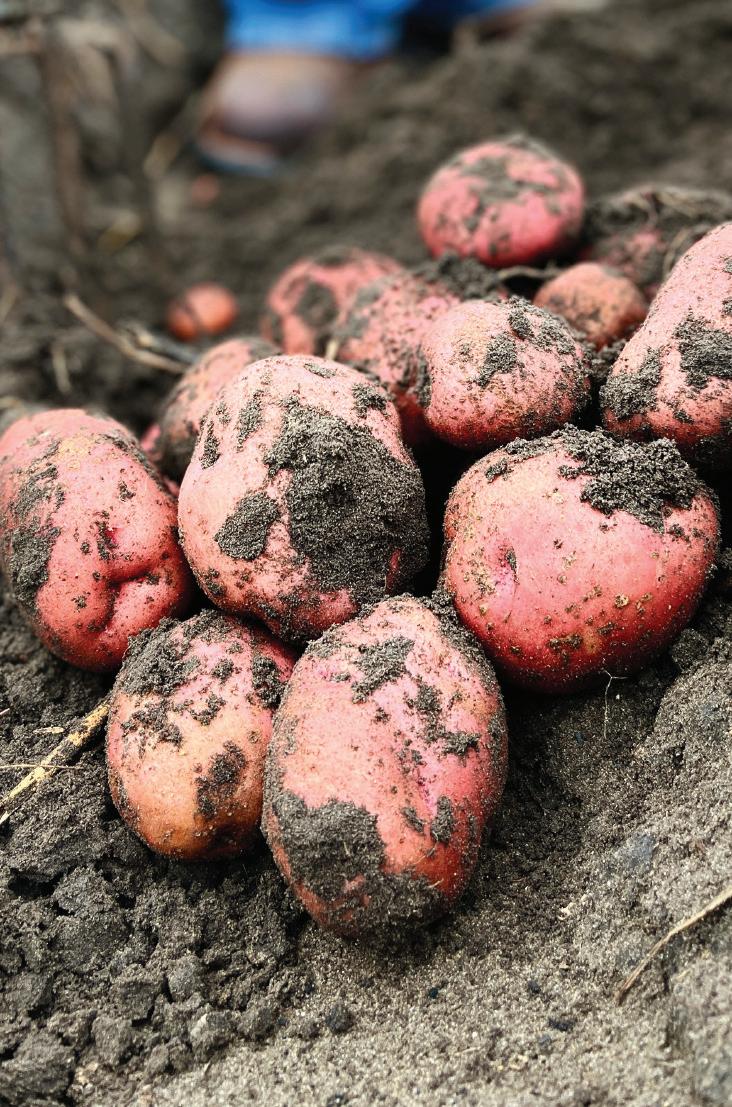
PotatoCountry.com 19
Contact us for more information at (208) 678-2610 @redoxgrows redoxgrows.com LISTEN TO OUR PODCAST Scan the QR code to listen to our Podcast Ne Nutrient E ciency Scan to learn more BETTER QUALITY & YIELD Units of Phosphorus Applied Grower Standard Redox Program Units of Applied Phosphorus 0 20 40 60 80 100 94 6 Yield Grower Standard Redox Program CWT Per Acre 600 620 640 660 680 700 682 692 The use of Redox products improved phosphorus e ciency by 94% while maintaining yield and quality. PHOSPHORUS EFFICIENCY
Rhett Spear with the University of Idaho answers questions about new potato varieties developed through the Tri-State Potato Breeding Program during the Idaho Potato Conference. Photo courtesy John O'Connell
Josh Kearl with All-Star Manufacturing and Design shows off the company's massive 84-inch seed cutter.



Need stacking power?


Do you need the ability to accumulate boxes with multiple SKUs?
Scan the QR to watch our flagship machine
VPM-VHV stack pallets at blistering speeds or visit verbruggen-palletizing.com
Among the many variables evaluated, the study shows that prolonged exposure to higher heat can lead to shorter and rounder potatoes. Other variables that may impact tuber shape include day length, with longer periods of dark during the growing season contributing to an increase in tuber length.
Though no two growing seasons are exactly alike, Washington potato farmers typically have a 15- to 20-day longer growing season with warmer weather than farmers in eastern Idaho. Eastern Idaho farmers have about 25 minutes more darkness and temperatures that average 5 to 7 degrees cooler during the crucial bulking period of potatoes.
“It may not be 100% perfect, but based on the statistics here and the information we’ve gathered, if we have a certain length to width here in Aberdeen, we could predict with a certain amount of accuracy what that length to width would be in Washington, for example,” Spear said. “This seems to have been anecdotal for years, but it’s good to put some numbers to it and show there really is a difference.”

20 Potato Country • March/April 2024
Discover the ultimate potato stacking & palletizing solutions.
Holt Arena on the Idaho State University campus in Pocatello, Idaho, hosted its last Ag Expo this year. The facility has had extensive remodeling and picked up a credit union sponsor. It’s now called the ICCU Dome.
IDAHO POTATO CONFERENCE AND EASTERN IDAHO AG EXPO
An attendee at the Eastern Idaho Ag Expo plays cornhole at the Milestone booth.
CALENDAR
Mar. 11-13
Potatoes USA
Annual Meeting
Four Seasons Hotel
Denver
Caitlin Roberts
caitlinr@potatoesusa.com
June 4
Ag World Golf Classic
Canyon Lakes Golf Course Kennewick, Wash. www.agworldgolf.com
June 6
Ag World Golf Classic
The Links at Moses Pointe Moses Lake, Wash. www.agworldgolf.com
June 23-26
World Potato Congress
Adelaide Convention Centre Adelaide, Australia www.potatocongress.org
June 24-28
NPC Summer Meeting
The Elizabeth Hotel Fort Collins, Colo. www.nationalpotatocouncil.org
Aug. 5-7
Potatoes USA
Summer Meeting
Westin Bayshore Vancouver, BC, Canada
Caitlin Roberts
caitlinr@potatoesusa.com
KNOW YOUR INSECTS ANSWERS
(FROM PAGE 13)
Photo A is a mature ladybeetle (a.k.a. “ladybug”) larva in the family Coccinelidae. These are predators of small soft-bodied insects, particularly aphids, whiteflies and psyllids.
Photo B is a harvestman, also known as “daddy longlegs.” These are relatives of spiders in the order Opiliones. They are predators and scavengers on the ground and in the plant canopy, and some small species live in the soil.
Photo C is a snakefly in the order Raphidioptera. These are predators of small insects and other soft-bodied arthropods.
NEW PRODUCTS
Company Sells
HyperSound
Seed Treating Technology
Wise Lifestyle Technology Company is marketing its HyperSound devices to treat seed potatoes. By dropping seed through the device, the terahertz frequency inside the device clears disturbances – such as the negative effects of being cut and handled – out of the seed and allows it to express its full genetic potential, according to the company. The terahertz frequency spectrum is said to activate metabolic functions and help exchange information between cells and organisms, leading to more coherence in the crop. The company says this all leads to more yield and potentially less need for fertilizers and pesticides. Visit www.wise-lifestyle.net.

















•





•
•
•
•
•





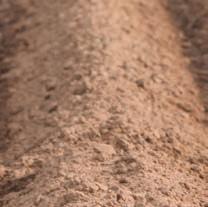


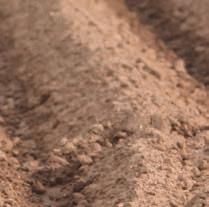





PotatoCountry.com 21
C.S.I.
The Calcium Solution Western States WALT GRIGG 509-952-7558 UNLOCKINGTHE KEY TOCALCIUM
CHEMICAL CORP.
Best tuber quality that distinguishes your product over competitors
Reduces crop loss
Reduces
and Black Heart
Storage Bruises
Longer storage and shelf life
Increases tuber firmness and skin set
Highlights color, firmness and taste
WSU Researcher
Inducted Into Ag Hall of Fame
Tim Waters, a Washington State University (WSU) regional vegetable specialist, has been inducted into the Mid-Columbia Agriculture Hall of Fame by the Pasco Chamber of Commerce. Hall of Fame members are recognized for their noteworthy achievements, expertise, and legacy of impactful results. Waters received the Rising Star Award, which recognizes demonstrated commitment to the future of agriculture.
Waters specializes in integrated pest management of potato, onion, carrot, dry bean and other production vegetables in the region, working closely with growers and crop consultants to address pest and disease issues they are experiencing. He has been a WSU faculty member since 2006.
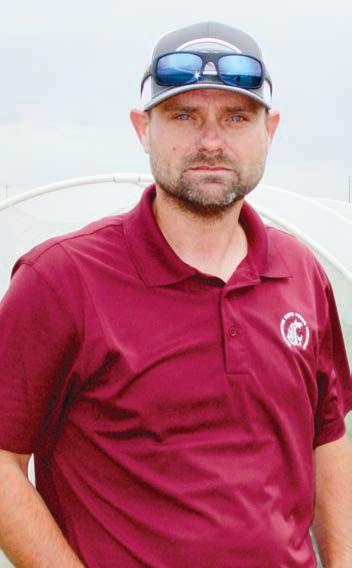
Deron Beck
Joins HZPC
HZPC has welcomed Deron Beck to the company’s North American team. Beck brings 15 years of experience in vegetable research and variety development to his new position as product manager. Beck has a master’s degree in plant science from the University of Idaho and has spent much of his career focusing on potatoes, onions, carrots, sweet corn and peppers.

Founded in 1898 and rooted in the Netherlands, HZPC specializes in potato breeding, seed potato trading and concept development.
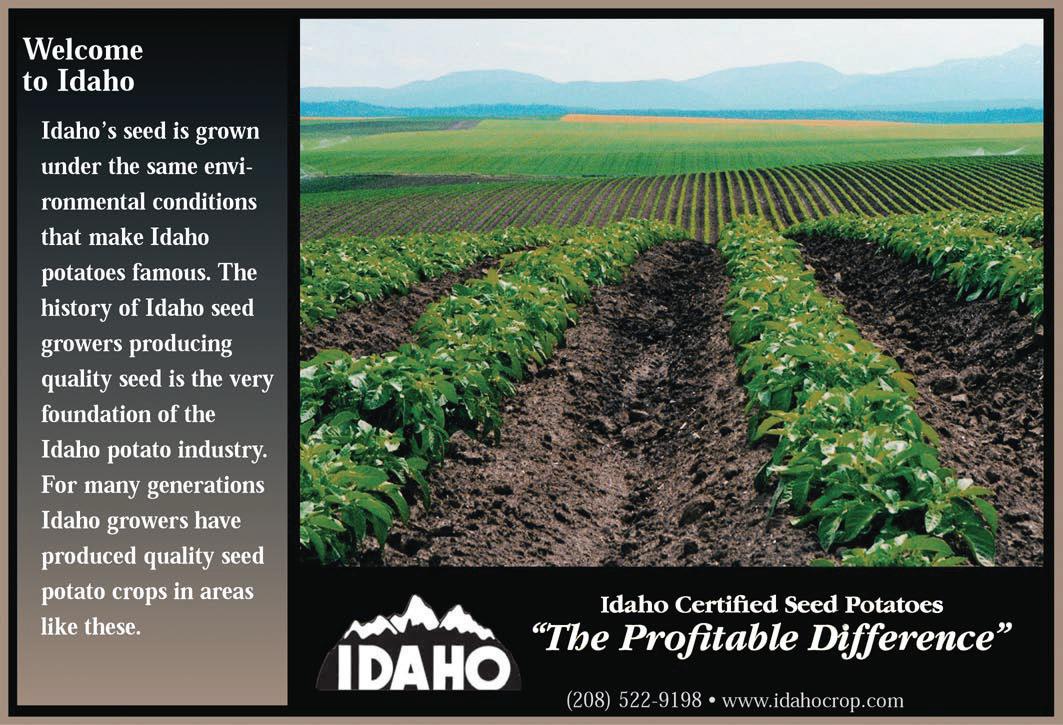
22 Potato Country • March/April 2024 INTHE
NEWS
Industry Mourns Loss of Mike Madsen
Washington State Potato Commissioner Mike Madsen passed away unexpectedly in January. Madsen is remembered as a thoughtful leader and a staunch supporter of potato research. Washington State Potato Commission leaders say Madsen was always reaching out to others for their opinions and ideas. He led with vision and optimism, always thinking about the future. He believed that investing in new variety development was critical in helping solve production issues.

Madsen was also a board member of the Potato Variety Management Institute and a member of the Northwest Potato Research Consortium.
Redox Turns 30
Redox Bio-Nutrients is celebrating its 30th anniversary this year. The company provides carbon-based nutrition products with bio-stimulant properties to agricultural producers across the U.S. and internationally. The company aims to help growers succeed in four primary areas: soil health, root development, abiotic stress defense and nutrient efficiency.
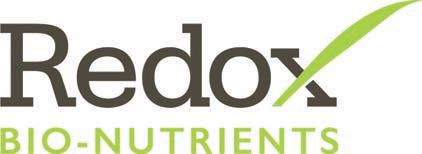
According to Redox, the field of bio-nutrition is gaining broad acceptance, and new breakthroughs in scientific research indicate a bright future for progressive growers. The company points to quantifiable benefits from biostimulants, including improved size and firmness for multiple crops, as well as dramatic nitrogen efficiency gains while maintaining strong crop yield.

RUSSET VARIETIES:
Russet Norkotah S3
Russet Norkotah S8
Rocky Mountain Russet
Silverton Russet
Rio Grande Russet
Canela Russet
Mesa Russet
Mercury Russet
Fortress Russet
Crimson King
COLORED VARIETIES:
Columbine Gold
Colorado Rose
Rio Colorado
Red Luna
Purple Majesty
Masquerade
Mountain Rose
Vista Gold

La
G&G
Bothell




Martinez

PotatoCountry.com 23
Lorem ipsum Seed Growers: Zapata Seed Company
Family Farms
Research Center
Acacio Seed
Farms Rockey Farms, LLC
Seed Price Farms Certified Seed, LLC
Farms, LLC
Worley
SLV
San
Salazar
Pro
Palmgren
Farms
Rue
Farms
Farms H&H
Farms
Seed Allied Potato Colorado Certified Potato Growers Association P. O. Box 267 Monte Vista, CO 81144 Lyla@ColoradoCertifiedPotatoGrowers.com (719) 274-5996 ColoradoCertifiedPotatoGrowers.com
Certified
Growers Association “Quality as High as our Mountains”
Colorado
Potato
2024 Potato Planting Considerations
Factors affecting 2024 potato acreage are mixed. Growers have many things to consider when making planting decisions for this year’s potato crop. Some of the major factors include current and projected potato prices, prices for alternative crops, production costs, contract volumes, irrigation water supplies, land availability and crop rotations. Table 1 shows a four-year history of U.S. potato acreage by state, along with the year-to-year percentage change. In this article, we review some of the key factors influencing 2024 planting decisions.
Idaho
Washington GRI $18.29$8.03-56.1%
All Wheat $9.12$6.77-25.8%
All Barley $7.40$7.20-2.7%
Malt Barley $7.54$7.661.6%
Alfalfa $241$210-13.0%
Corn $6.52$4.80-26.4%
Soybeans $13.97$12.93-7.4%
Alternative Crop Prices
Near breakeven open-market prices for the 2023 potato crop could encourage growers to plant fewer acres to potatoes in 2024. The average Idaho Russet Grower Return Index from October through December is $8.12 per cwt, down 54.8 percent from $17.96 per cwt a year earlier. The Washington GRI averaged $8.03 per cwt during the same timeframe, down 56.1 percent from the previous year.
Prices for most competing crops are also down from where they were a year ago. USDA reports that the national allwheat price averaged $6.77 per bushel during the October-December period versus $9.12 per bushel a year ago, a 25.8 percent decline. All-barley (-2.7 percent) and malting barley (+1.6 percent) prices are relatively flat. Alfalfa prices are down 13 percent across the country at $210 per ton. Corn prices have dropped 26.4 percent to $4.80 per bushel, while soybean prices have fallen 7.4 percent to $12.93 per bushel. Growers may consider potato acreage cuts this year, especially given the relatively stronger prices and lower input requirements for alternative crops.
2020202120222023
Maine 515452531.9%
Colorado 545353553.8%
Michigan 464646508.7%
Oregon 454443454.7%
Miinesota 42424746-2.1%
California 292621239.5%
Florida 212120215%
Nebraska 1919202210%
Texas 15.513131623.1%
Total Acreage 918.59339169655.3%
Year/Year Change -4.7%1.6%-1.8%5.3%
Southwestern Idaho Potato Production Costs per Acre, 2022-2023
24 Potato Country • March/April 2024
MARKET REPORT
Planted Potato
(Thousand Acres)
US
Area, 2020-2023
2022-23 Change Idaho 30031529533011.9% Washington 155155165160-3% North Dakota 727674762.7% Wisconsin 696967681.5%
Alternative Crop Price Changes, 2022-2023 20222023Change
GRI $17.96$8.12-54.8%
Operating Costs 20222023Change Seed $545$72532.9% Fertilizer $907$710-21.7% Pesticides & Chemicals $796$719-9.7% Custom & Consultants $161$21533.5% Irrigation $161$19722.3% Machinery (fuel, lube, repairs) $262$249-4.8% Field Labor $364$41513.9% Sorting $77$11144.5% Other $165$18512.4% Operating Interest $150$20636.8% Total Oper. Costs per Acre $3,588$3,732 4% Ownership Costs
Tractors & Equipment Ins. $7.35$922.4% Tractors & Equipment D & I $292$3075.1% Potato Handling Equip. D & I $165$1734.8% Land $800$88510.6% Overhead $108$112 4% Management Fee $273$2875.2% Total Own. Costs per Acre $1,645$1,7737.8% Total Cost per Acre $5,233$5,5055.2%
20222023Change
Table 1. Four-year history of US potato acreage and year-to-year percentage change
Table 2. Alternative crop price changes from 2022 to 2023 (Source: USDA-NASS, Oct.-Dec.)
Table 3. Estimated 2022 and 2023 operating (direct/variable) costs and ownership (indirect/fixed) costs for potato production in southwestern Idaho.
Production Costs
Though prices for some inputs could come down this year, overall production costs are expected to remain high for the 2024 crop. Table 3 shows the estimated 2022 and 2023 operating (direct/variable) costs and ownership (indirect/fixed) costs for potato production in southwestern Idaho. Per acre operating costs rose by 4 percent. There were significant cost increases last year for seed, custom and consultants, irrigation and labor. On the other hand, fertilizer, chemical and fuel prices were down from 2022 levels. Currently, seed, fuel, chemical and fertilizer costs are below year-earlier levels. Other operating expenses are expected to increase in 2024. Labor costs are likely to continue upward with rising inflation. Relatively high interest rates could decline somewhat, but probably not before operating loans are secured.
Ownership costs are on the rise. Land rent and equipment costs will increase again this year. Overall, 2023 ownership costs climbed 7.8 percent above 2022 costs, which put the total cost increase at 5.2 percent. Total production costs climbed as much as 8.8 percent in other parts of Idaho. Other growing areas faced similar increases. Idaho’s cost per cwt was down slightly due to the 2023-crop yield increases. Machinery and equipment depreciation has been increasing with rising equipment and interest costs. A shift to mechanical sorting due to rising labor costs and workforce availability has encouraged more investment in technology. Land rents continue to receive upward pressure as farmland values increase along with demand from other ag sectors.
Other Factors
Several other factors could affect the 2024 U.S. potato acreage. Processing contract volumes in the Pacific Northwest are expected to be down, following last year’s large production increase. Carryover from the 2023 crop will reduce the need for early potatoes. Contract volumes may be more stable in the Midwest and Northeastern processing states. On the bright side, both domestic and export demand for French fries and other frozen products has been strong. Crop rotation requirements typically prevent wide year-to-year swings in potato acreage. Shifts in acreage on a statewide basis are often more variable than the change in acreage on a national level. Year-to-year changes are typically less than 5 percent. Finally, the country’s
overall economic and political conditions may also weigh heavily on planting decisions. Growers across the country are considering the unique financial, production and market risks of growing potatoes this year.
Summary
There are several factors to consider when making planting decisions. Open-market potato prices are down significantly compared to the past two years. Prices for most alternative crops are also down, but not as much. The opportunity cost of growing potatoes versus other crops will be at the forefront of this year’s planting decisions. Rising production costs could continue to

squeeze profit margins. Even with relatively flat contract prices, profit margins could be slim unless growers monitor costs closely. Other factors such as contract volumes, irrigation water supplies, yield variation, crop rotations and national economic conditions will play into planting decisions this spring.
KEY POINTS
planted potato area.
• Lower potato prices could encourage growers to reduce potato production in 2024; however, prices are also down for alternative crops.
• Crop rotation, contract volumes, capital requirements and national economic conditions are also factors to consider when making 2024 planting decisions.


PotatoCountry.com 25
Agricultural Consulting & Testing • Soil Testing • Irrigation Scheduling • Feed Analysis • Contract Research • Tissue Testing • Pest Management • Field Research • Grid Sampling • Variable Rate Fertilization • International Testing • Agronomic and CCA Seminars • Nematode Testing Contact: Paul Stukenholtz, Consulting Agronomist Crop Consultants: JP Kruckeberg • Bart Kunz • Cameron Brower Antone Christensen • Wess Gibson • Cody McCoy • Kevin Victor 208-734-3050 • 800-759-3050 PO Box 353 • 2924 Addison Ave E. • Twin Falls, ID 83301 www.stukenholtz.com By Ben Eborn, Publisher, North American Potato Market News Editor’s note: To contact Ben Eborn, or to subscribe to North American Potato Market News (published 48 times per year), write or call: P.O. Box 176, Paris, ID 83261; (208) 525-8397; or email napmn@napmn.com.
production costs and financial risk could limit this year’s
• Rising
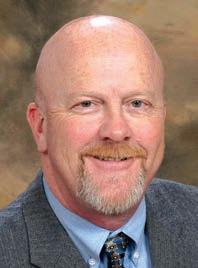
Words of Caution for 2024
By Dale Lathim, Potato Growers of Washington
Aswe kick off another crop year, I hope that you will keep a few things in mind.
First is the overall acreage planted to potatoes.
ADVERTISER INDEX
Ag World ..............................3
Bayer ..................................28
Colorado Seed ....................23
Corteva...............................27
Greentronics.......................14
Idaho Crop..........................22
Inter Agra .............................9
IPC........................................5
Montana Seed ....................15
Nutri-Cal .............................21
Redox .................................19
Skone Irrigation ..................26
SpudEquip.com ..................17
Stukenholtz ........................25
The Potato Podcast
Sponsored by Vive ..............13
Teleos ...................................2
Titan Steel ..........................11
Verbruggen.........................20

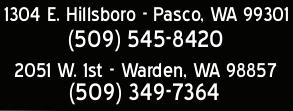
In 2023, we all thought we were going to be tight on acres once again as the supply chain was dramatically low and the prevailing thought was there was not enough seed to go around. As we now know, seed will never be a limiting factor as the Pacific Northwest increased potato acres by more than 50,000.
Much of the increase was in contracted acres as processors wanted to assure their customers that they were doing all they could to supply them. Besides the contracted acres, there were more non-contracted, open potatoes than the industry has seen in decades. These extra acres, combined with the return to near trend-line yields and quality, resulted in the largest surplus we have ever seen.
With that surplus hanging over us, many of those potatoes will get used by processors and fresh shippers. This will result in the need for fewer committed acres from all segments of the industry for 2024. So, to get us back into balance, we not only need to reduce for the amount of the carryover, but also to get back to a realistic base acreage. To accomplish this, we as an industry will need to take a much larger reduction in acres than many growers appear to be planning for.
For years, I have been saying “if you don’t have a known home for your potatoes at planting time, do not plant them!” Open potatoes rarely make you money and more years than not cost yourself and the rest of the industry millions of dollars. Please resist the temptation to outsmart the market.
The second thing on my mind regarding the 2024 crop goes back to seed. Last year when the fear of a seed shortage loomed, many growers in the Columbia Basin planted some seed that had virus levels higher than they would have liked but didn’t seem too far out of line. The resulting stands in those fields were far from ideal, and the
yields and quality from those fields were significantly reduced.
This year, there is a known virus issue with some seed. I encourage every grower to be very sure of the seed you buy and get as much information as possible on how that lot performed in the winter test. There should be more than enough seed to go around this year. You can save yourself a lot of headaches and dollars if you put in the time and effort upfront to verify your seed supply.
My final thought for now is to share with you the hot buttons from the processors during negotiations this year. All the companies are still getting great pressure from their customers to continue to move closer and closer to zero foreign material of any kind. While every one of you is doing a great job of reducing the amount you contribute, until we have a way to completely eliminate the foreign material, we can’t let our guard down.
The other issues that were strongly debated in negotiations varied based on the customer/product mix of each processor and their individual wants and needs. With that in mind, sugar/ color, rot, defects and size/length are still areas that processors need you to be very diligent about doing all that you can to maximize those quality attributes. Each processor’s contract is structured to reward or penalize you for the attributes that are most important to them. What works best for one processor is not necessarily what another processor wants or needs.
I wish all of you a very successful and profitable 2024 potato crop.
26 Potato Country • March/April 2024
IN THE POTATONEWSGROWERS OF WASHINGTON
Subscribe at PotatoCountry.com/subscribe



PLANT HEALTH & NEMATODE MANAGEMENT IN PLAIN SIGHT



It’s easy to see all the bene ts that Vydate® C-LV insecticide/nematicide offers. In the soil, Vydate C-LV provides protection against damaging nematodes. Above ground, its foliar activity protects plants against numerous insects, such as aphids, lygus, Colorado potato beetle, potato psyllid and leafhoppers. Plus, Vydate C-LV delivers the “carbamate kick”, something you’ll observe as “green up” of plants, improved plant vigor/growth, reduced senescence and improved yields. To learn more about the eye-catching bene ts of Vydate C-LV, contact your crop consultant.
Visit us at corteva.us ®™Trademark of Corteva Agriscience and its af liated companies. Vydate® C-LV is a Restricted Use Pesticide. Vydate C-LV is not registered for sale or use in all states. Contact your state pesticide regulatory agency to determine if a product is registered for sale or use in your state. Always read and follow label directions. ©2023 Corteva



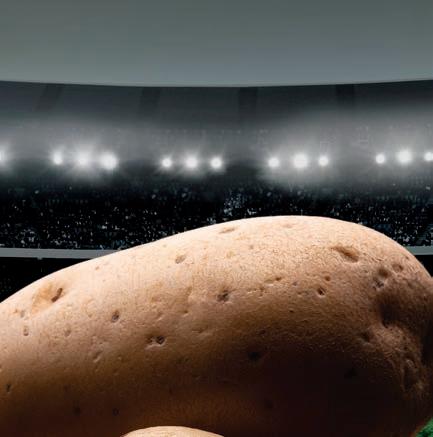
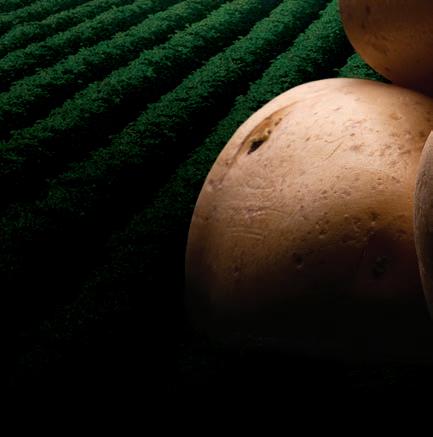







Tackle white mold with a defensive all-star. Luna® Pro is a member of the Force in the Field team and the defensive rookie of the year. It’s our rst potato fungicide to combine an SDHI and DMI for excellent protection. Learn more at LunaPro.us. ALWAYS READ AND FOLLOW PESTICIDE LABEL DIRECTIONS. Not all products are registered for use in all states and may be subject to use restrictions. The distribution, sale, or use of an unregistered pesticide is a violation of federal and/or state law and is strictly prohibited. Check with your local dealer or representative for the product registration status in your state. Bayer, Bayer Cross, and Luna® Pro Fungicide are registered trademarks of Bayer Group. For additional product information, call toll-free 1-866-99-BAYER (1-866-992-2937) or visit our website at www.BayerCropScience.us. Bayer CropScience LP, 800 North Lindbergh Boulevard, St. Louis, MO 63167. ©2024 Bayer Group. All rights reserved.
























































































































 2001: From left, Paul Jamson, Lute Prinsen, Rick LeFair and Jose Gonzales check out a trade show booth.
1997: The Washington State Potato Commission takes part in the Washington Potato Conference.
1999: From left, Chris Berg, Pete Cassinelli and Michael Bell converse at the Idaho Potato Conference.
2001: From left, Paul Jamson, Lute Prinsen, Rick LeFair and Jose Gonzales check out a trade show booth.
1997: The Washington State Potato Commission takes part in the Washington Potato Conference.
1999: From left, Chris Berg, Pete Cassinelli and Michael Bell converse at the Idaho Potato Conference.





























































































